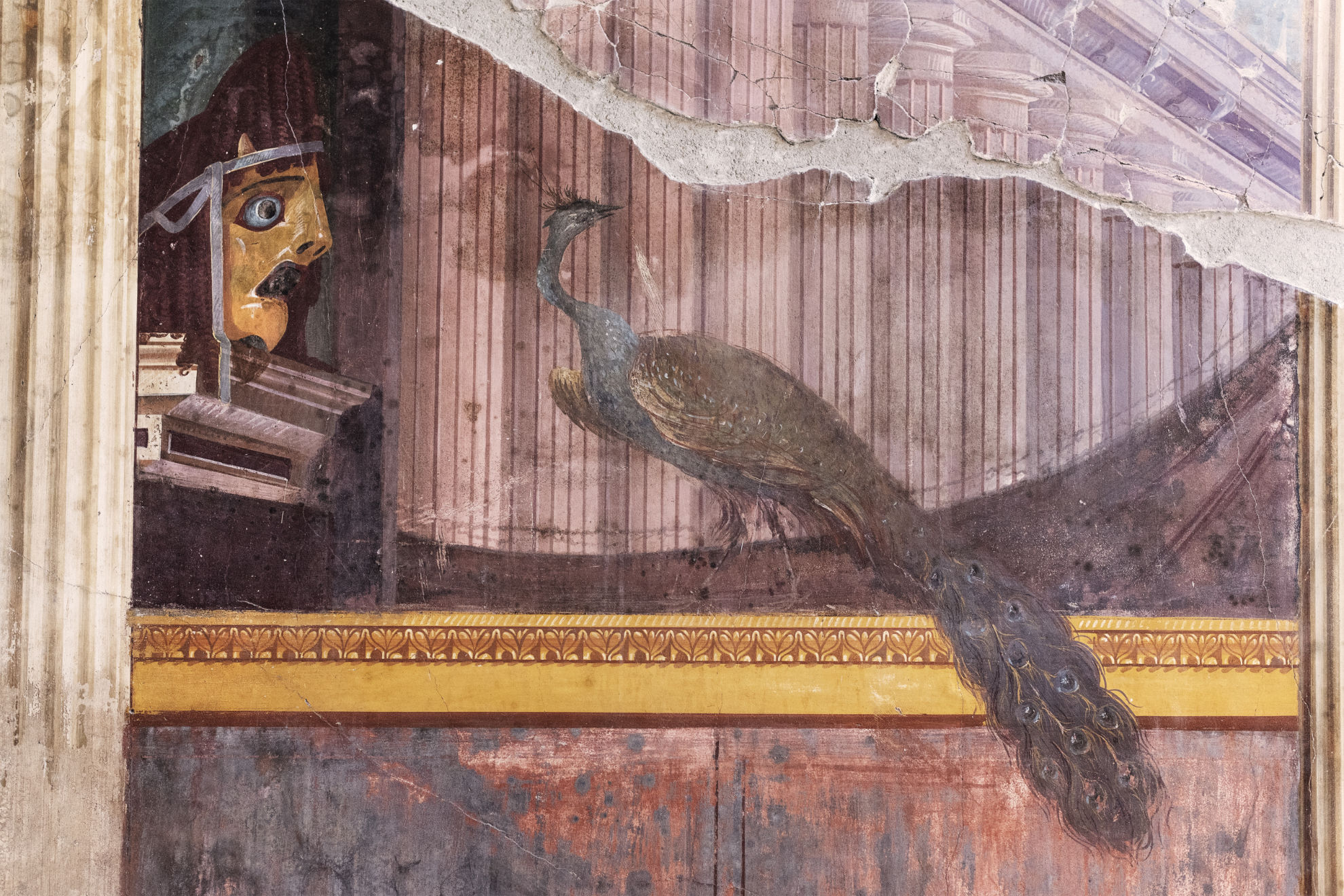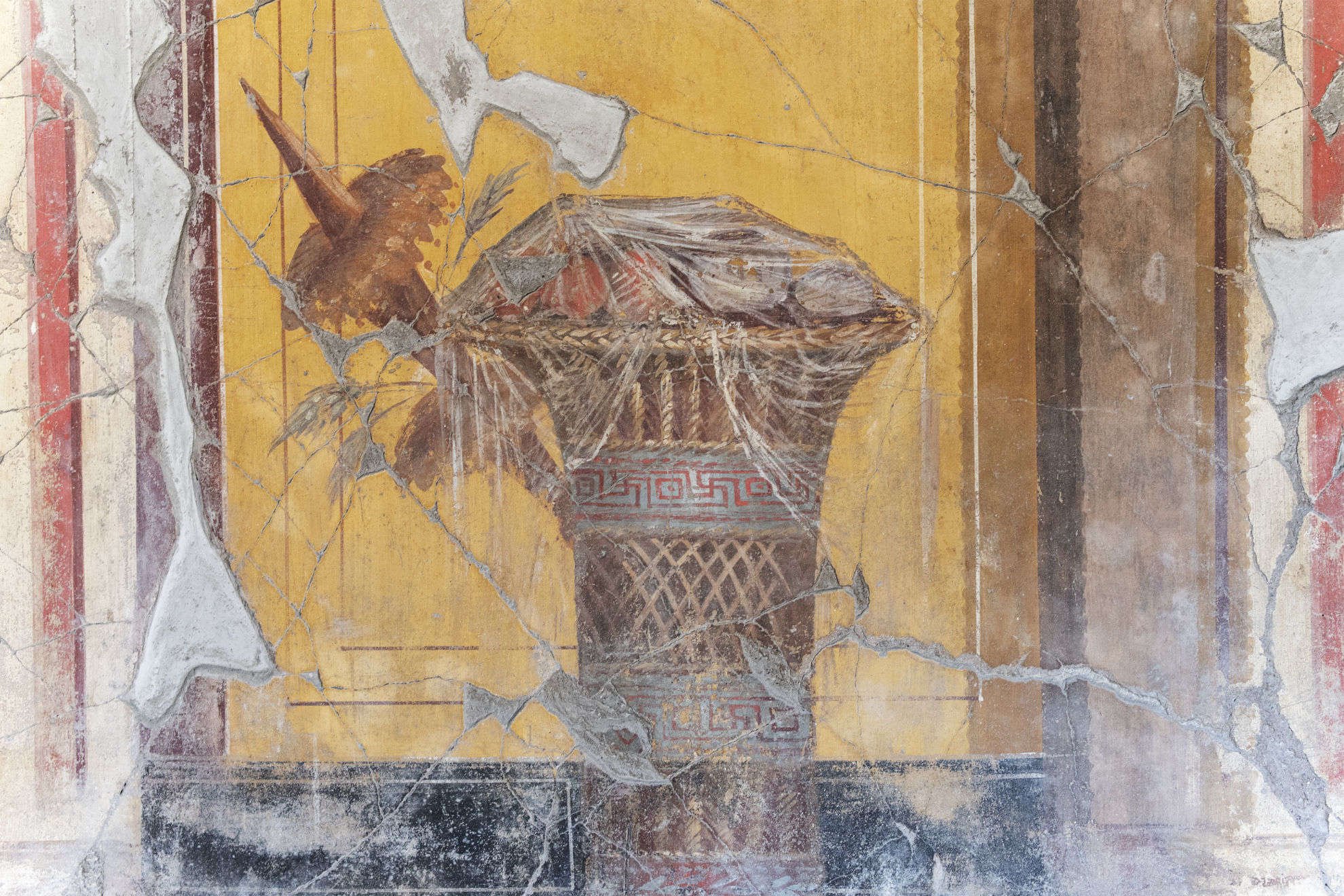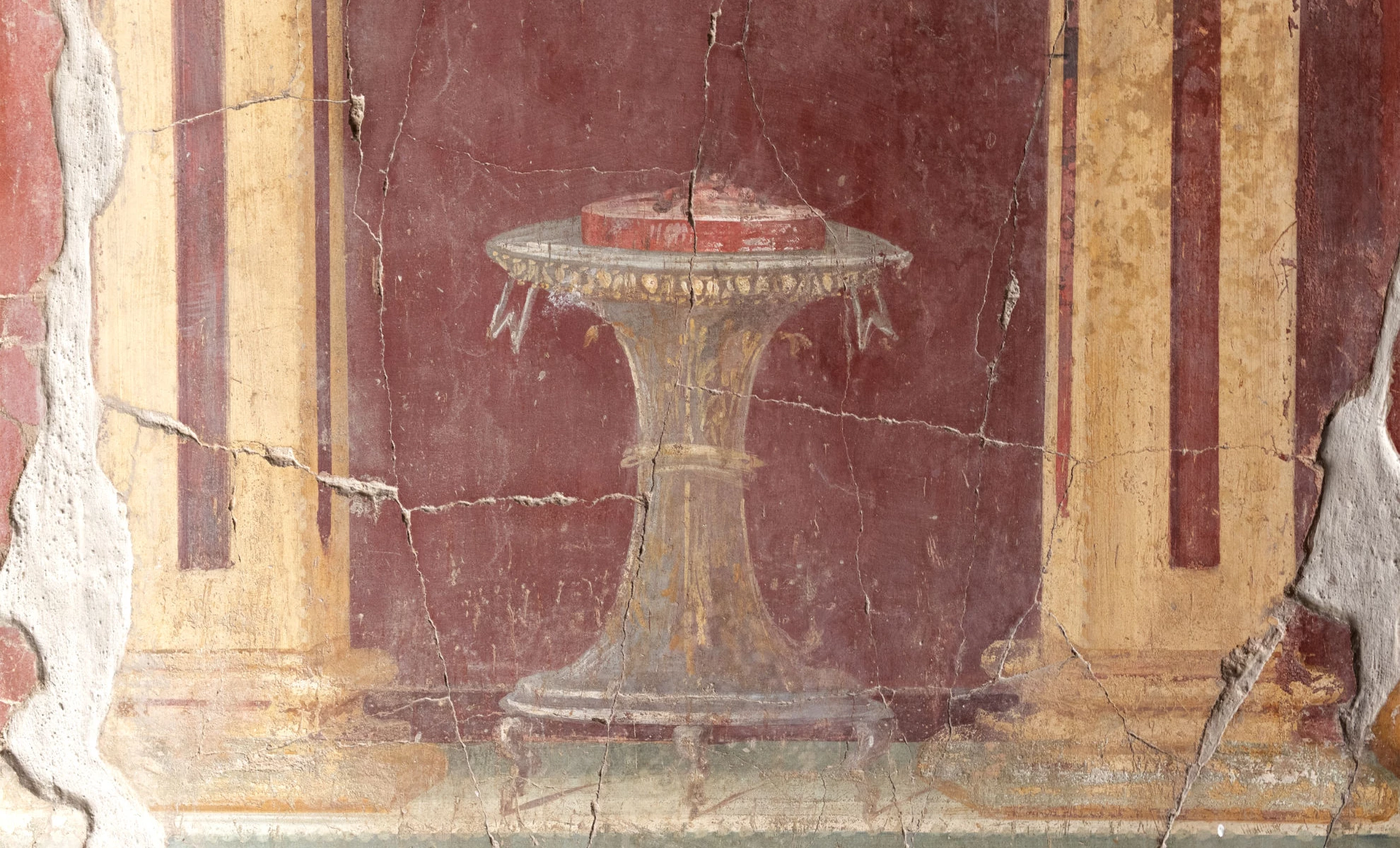Honey, ricotta and dates for the preparation, a beautiful vermilion red coating and an elegant tray to make everything more spectacular. Honey, ricotta and dates for the preparation, a beautiful vermilion red coating and an elegant tray to make everything more spectacular. These are not suggestions from a food blogger, but the result would never disfigure if published on Instagram, together with the hashtag #cassatadioplontis.
This delicious dessert is so called because it can be admired in the town once called Oplontis, today Torre Annunziata, and not in a refined pastry shop, but on the wall of one of the most beautiful otium villas in Campania: the so-called Villa di Poppea, as it believed to have belonged to the wife of Emperor Nero, buried by the eruption of Vesuvius in 79 AD.
A cute little bird eats figs | Ph. Anna Monaco

In this villa, the watchword is luxury, expressed through refined and impressive architecture, facing the sea, with well-kept gardens. Through refined pictorial decorations, at times illusionistic and through an immense swimming pool, from the spa district and large halls. Right here the most precious representations of the villa welcome the guests: peacocks, theatrical masks and delicate baskets containing pomegranates, fruit of many kind and then the cake renamed by contemporary historians “cassata oplontina”.
A theatre mask faces one of the many peacocks frescoed in the Villa | Ph. Anna Monaco

The appearance, in fact, is very reminiscent of the famous Sicilian dessert, and probably the taste should have been quite similar. It consists of a preparation based on dried fruit, walnuts, pine nuts and almonds, enriched with sheep's milk ricotta, decorated with an almond paste, made red by cochineal powder and with dates; a sweet with an intense, delicious flavor, suitable for the wealthy table of the villa of Poppea.
Close-up of the cassata | Ph. Anna Monaco

Undoubtedly a course for the end of dinner, the richest meal in ancient Rome. It came perhaps after wild boars stuffed with fruit and sprinkled with garum (a very precious sauce obtained from the maceration of fish entrails and salt) or, being the villa close to the sea, dishes based on moray eels and crustaceans.
To tell us these and other dishes are the frescoes of the domus and villas and the charred food finds of the Vesuvian sites, as well as the ancient recipe books such as the famous one of Apicius, who lived in the 1st century AD.
An elegant basket of figs covered with a transparent veil | Ph. Anna Monaco

The cook-writer illustrates elaborate recipes, but also provides ideas for experimenting with the cuisine of two thousand years ago. Not the laborious cassata oplontina, but something easier, like fried stale bread topped with honey or, to be in the theme of delicacies based on dried fruit, dates without stones stuffed with crumbled walnuts and pine nuts, flavored with pepper and then either fried or dipped in hot honey.

